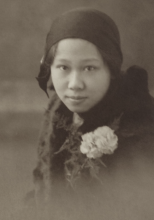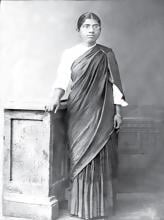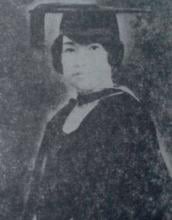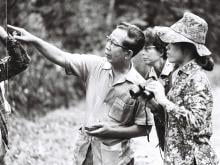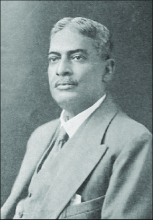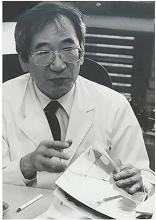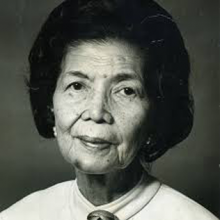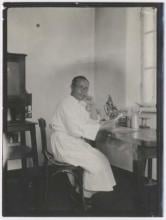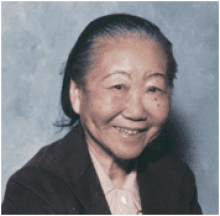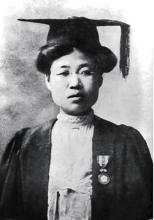Medicine
News

19 Dec 2006
Recognizing the huge advances in experimental treatments for spinal cord injury, four papers to be published online this week in the journal Spinal Cord address the need for a principled set of guidelines for clinical trials in patients with spinal damage.

18 Dec 2006
Has the promise of islet transplantation to treat diabetes been fully realised? Not yet, according to a Viewpoint article to be published in the diabetes-themed January issue of Nature Clinical Practice Endocrinology & Metabolism, in which Piotr Witkowski and Kevan Herold discuss current practice and conclude that the procedure is far from perfect

17 Dec 2006
Summaries of newsworthy papers for Nature and the Nature Research Journals that will be published online on 17 December 2006. Genetic mutation in autism, Synchronized sleeping in the brain and Humans follow the scent

15 Dec 2006
The Tokyo University of Science signed an Academic Cooperation Agreement with the Bulgarian Academy of Sciences to proceed research collaboration in various fields.

14 Dec 2006
A set of guidelines for pathologists that may greatly improve the diagnosis of malignant lymphomas are published online this week by Leukemia. In five related papers, a group of leading scientists participating in the EU-supported BIOMED-2 programme report a new test that could be used as an efficient and cost-effective method to diagnose lymphomas

14 Dec 2006
The obstacles facing the development of genetics-based personalized medicine are described online this week in Clinical Pharmacology & Therapeutics. Sandra Soo-Jin Lee highlights the problematic use of race and ethnicity as classification tools for genetically distinct populations.

13 Dec 2006
An anonymous online poll of nearly 1700 researchers has revealed intriguing insights into scientists’ views on the use of animals in research.

13 Dec 2006
For the first time, researchers in Laos have published a study on the causes of bacteraemia, or blood infections caused by invasive bacteria, in the local population. The study has major healthcare implications for Laos, one of the world's poorest nations.

07 Dec 2006
The biological role of a potassium channel in a pathogen that colonizes the stomach is characterized in a study to be published online this week in The EMBO Journal.

06 Dec 2006
New molecular evidence, published online by Nature this week, sheds significant doubt on the charges against six medical workers facing the death penalty in Libya. They are charged with deliberately contaminating more than 400 children with HIV in 1998.

06 Dec 2006
Summaries of newsworthy papers from Nature Vol.444 No.7120 including Key influenza virus molecule visualised, Navigating the mouse brain, Protein blocks brain tumour growth, Targets for improvement in the developing world, Crime and punishment, New stable ‘table top’ particle accelerator, Big brown bats feel the magnetic force ...

03 Dec 2006
Summaries of newsworthy papers from Nature Research Journals include Mycobacterium tuberculosis copper regulator found – Nature Chemical Biology, Key to relapsing multiple sclerosis – Nature Immunology, Fast 3D imaging of brain cell networks – Nature Methods

30 Nov 2006
For the first time in almost forty years, researchers are creating a global map of malaria risk. The Malaria Atlas Project, or MAP, will help identify populations at particular risk and predict the impact of the disease, allowing health resources to be targeted at those areas most at risk.

29 Nov 2006
The constant presence of a population of ‘regulatory’ immune cells is essential for the prevention of autoimmune disease, according to a paper published in the February issue of Nature Immunology.

26 Nov 2006
Summaries of newsworthy papers from Nature and Nature Research Journals include Prime cuts – Nature Immunology and A new tool to analyze bacteria in microbial ecosystems – Nature Methods

23 Nov 2006
Summaries of newsworthy papers include Protein monitors arrested eggs for DNA damage, Mount St Helens rock causes ‘drumbeats’, Drug promise for renal disease, By their teeth ye shall know them, Corals take a battering, Watching proteins unfold, Superconducting silicon, Hessian ware recipe

20 Nov 2006
As the Shoklo Malaria Research Unit in Mae Sot, Thailand, celebrates its twentieth anniversary, Prof Francois Nosten reflects on the success of the unit, based amongst the region's refugee camps.

19 Nov 2006
Summaries of newsworthy papers include Nanomaterials for imaging and therapy – Nature Materials, High times for memory – Nature Neuroscience, An unexpected mechanism of pain – Nature Neuroscience, Auditory repetition and dyslexia – Nature Neuroscience

16 Nov 2006
The December issue of Nature Immunology presents a Focus on special immune proteins that detect the presence of invading pathogens in various hosts. The Focus will go live on 16 November at http://www.nature.com/ni/focus/innateproteins/.

15 Nov 2006
A detailed analysis of Neanderthal DNA provides a unique insight into the genetic changes that accompanied the transition from early hominid to modern man. The study, reported in this week’s Nature, paves the way for a Neanderthal genome-sequencing effort.

15 Nov 2006
Researchers have discovered two mutations in the H5N1 avian influenza virus that enable it to recognise human receptor proteins. The amino acid changes, might prove useful molecular markers for assessing the pandemic potential of H5N1 samples.

15 Nov 2006
Treatments for muscular dystrophy, Five grand challenges for safe nanotechnology, Predicting the endpoint of earthquake ruptures, Infant burial by early modern humans, Discovery may help defeat gypsy moth, Flushing submarine canyons, Graphene in a spin

13 Nov 2006
Richard Mukabana has collected empirical data that dispels the myth that bush clearing can control mosquitoes and has assembled crucial evidence that provides a basis for amending a policy that is not practical or effective in tropical Africa.

12 Nov 2006
Summaries of newsworthy papers include Molecule required for bone repair identified – Nature Genetics, Problems with a potential Alzheimer disease treatment – Nature Neuroscience

08 Nov 2006
Climate change: New Antarctic ice core yields detailed climatic insights, Infectious disease: SIV endemic in wild gorillas?, Neuroscience: How to keep a steady eye, Astronomy: Moon’s surface shaped by ‘recent’ gas release? and finally… Chillies and spiders share similar scare tactics

06 Nov 2006
The eye can provide a very reliable way of diagnosing cerebral malaria, researchers in Malawi have shown. By looking at the changes to the retina, doctors are able to determine whether an unconscious child is suffering from this severe form of malaria or another, unrelated illness, leading to the most appropriate treatment.

05 Nov 2006
Summaries of newsworthy papers from Nature and Nature Research Journals include: DNA sequencing reveals bacterial evolution in the lab, Kidney disease caused by mutation may be reversible, Benefits of fever, Redefining receptor organization – again.

03 Nov 2006
More than one hundred Nobel laureates have written to Colonel Muammar al-Gaddafi to express their concern over the death-penalty case of 5 Bulgarian nurses, and a Palestinian doctor, accused of deliberately infecting more than 400 children with HIV in 1998.

02 Nov 2006
The hepatitis C virus infection is estimated to affect 170 million people around the world. The researchers aim was to analyse if the new induction therapy with twice-daily IFN-ß is better than once a day CIFN therapy for a period of 6-months for chronic hepatitis C.

01 Nov 2006
Having your cake and eating it too, ‘Silver bullet’ strategies due a rethink, Rock-solid support for ‘Snowball Earth’ theory, The benefits of sleeping around, Tiny mirrors chill out, New sonic hedgehog receptor, Maize fungal genome deciphered, ‘Export’ protein structure unveiled, Policing every egg you lay
Researchers
Sorry, no researchers coming up for this topic.
- « first
- ‹ previous
- 1
- 2
- 3
- 4
Giants in history
Michiaki Takahashi (17 February 1928 – 16 December 2013) was a Japanese virologist who developed the first chickenpox vaccine.
Irene Ayako Uchida’s (8 April 1917 – 30 July 2013) strides to understand genetic diseases such as Down syndrome paved the way for early screening of chromosomal abnormalities in foetuses.
Baron Kitasato Shibasaburo (29 January 1856 – 13 June 1931) was a Japanese physician and bacteriologist whose work led to a new understanding of preventing and treating tetanus, diphtheria and anthrax.
Maggie Lim (5 January 1913 – November 1995) was a Singaporean physician who promoted family planning and expanded the access to clinics to improve the quality of life for mothers and children in Singapore’s early days.
By isolating soil microorganisms and studying the compounds they produce, Satoshi Omura (born 1935) discovered almost 500 organic compounds with unique properties that were produced by these microorganisms, including many new antibiotics.
The founder of the Adyar Cancer Institute in India, Muthulakshmi Reddy (30 July 1886 – 22 July 1968), fought to uplift women and girls from impoverished situations.
Chinese-American virologist and molecular biologist Flossie Wong-Staal (27 August 1946 – 8 July 2020) was the first scientist to clone HIV and determine the function of its genes.
Maharani Chakravorty (1937 – 2015) was one of India’s earliest molecular biologists whose research paved the way for advances in the treatment of bacterial and viral infections.
Archana Sharma (16 February 1932 - 14 January 2008) conducted research into plant and human genetics that expanded the understanding of both botany and human health. In relation to botany, she uncovered the means by which asexually-reproducing plants evolve into new species.
The first Thai woman to receive a degree in medicine, Margaret Lin Xavier (29 May 1898 – 6 December 1932), is best remembered for her compassion towards her less privileged patients.
In 1915, pathologist Katsusaburo Yamagiwa and his research assistant Koichi Ichikawa became the first to prove that chronic exposure to chemicals can cause cancer.
In 1915, Koichi Ichikawa along with pathologist Katsusaburo Yamagiwa became the first to prove that chronic exposure to chemicals can cause cancer.
Husband and wife team, Kimishige (3 December 1925 – 6 July 2018) and Teruko Ishizaka (28 September 1926 – 4 June 2019) discovered the antibody class Immunoglobulin E (IgE) that triggers allergic reactions. They also discovered that IgE antibodies attach to white blood cells, known as mast cells, releasing histamine, which causes allergic reactions.
Husband and wife team, Kimishige (3 December 1925 – 6 July 2018) and Teruko Ishizaka (28 September 1926 – 4 June 2019) discovered the antibody class Immunoglobulin E (IgE) that triggers allergic reactions. They also discovered that IgE antibodies attach to white blood cells, known as mast cells, releasing histamine, which causes allergic reactions.
Japanese chemist Takamine Jokichi (3 November 1854 – 22 July 1922) founded the Tokyo Artificial Fertilizer Company, where he isolated a starch-digesting enzyme (named takadiastase) from the fungus Aspergillus oryzae.
Ground-breaking cancer researcher Kamal Jayasing Ranadive (8 November 1917 – 11 April 2001) advanced the understanding of the causes of leukaemia, breast cancer and oesophageal cancer through the use of animal models. She was also among the first to recognise how susceptibility to cancer is linked to tumour-causing interactions between hormones and viruses.
The research of Filipino pharmaceutical chemist Luz Oliveros-Belardo (3 November 1906 – 12 December 1999) focussed on essential oils and other chemicals derived from native Philippine plants.
Thai physician and conservationist Boonsong Lekagul (1907 – 1992) made major contributions to the preservation of his country’s wildlife.
Indian scientist and physician Upendranath Brahmachari (19 December 1873–6 February 1946) is best known for creating a drug called Urea Stibamine, used to safely and reliably treat visceral leishmaniasis (or Kala-azar), a severe infection caused by the Leishmania parasite.
Filipino chemist and pharmacist Manuel A. Zamora (29 March 1870 – 9 July 1929) is best remembered for his discovery of the tiki-tiki formula to combat beriberi, a disease caused by Vitamin B1 deficiency.
Korean parasitologist Seung-Yull Cho (16 November 1943 – 27 January 2019) is remembered largely for his pioneering works to control infections caused by helminthic parasites and his contribution to journal publishing.
Fe Villanueva del Mundo (27 November 1911 – 6 August 2011) was a Filipina paediatrician who founded the Philippines’ first paediatric hospital.
After witnessing death and suffering as a youth in his home village during World War II, Nguyễn Tài Thu (6 April 1931 – 14 February 2021) set his sights on alleviating pain by becoming a doctor. After studying Traditional Chinese Medicine in China in the 1950s, Thu returned to Vietnam to serve in military hospitals. Eventually, he became the country’s foremost practitioner of acupuncture, a technique he first learned by inserting needles into himself.
Minoru Shirota (April 23, 1899 – March 10, 1982) was a Japanese microbiologist who invented the popular fermented drink Yakult.
Wu Lien-teh (10 March 1879 – 21 January 1960) was a Malaysian-born doctor who invented a mask that effectively suppressed disease transmission. Winning the prestigious Queen’s Scholarship enabled Wu to become the first Chinese student to study medicine at the University of Cambridge.
David T. Wong (born 1936) is a Hong Kong-born American neuroscientist who is best known for discovering the antidepressant drug fluoxetine, better known as Prozac.
Indian organic chemist Asima Chatterjee (1917 to 2006) studied the medicinal properties of plant products, especially compounds known as vinca alkaloids.
Chika Kuroda (24 March 1884 – 8 November 1968) was a Japanese chemist whose research focussed on the structures of natural pigments.
Umetaro Suzuki (7 April 1874 – 20 September 1943) was a Japanese scientist best remembered for his research on beriberi, a disease caused by vitamin B1 deficiency, characterized by limb stiffness, paralysis and pain.
Salimuzzaman Siddiqui (19 October 1897 – 14 April 1994) was an artist and chemist from Pakistan whose research focused on natural products from plants.
Barry Paw (29 August 1962 – 28 December 2017) was a biologist and oncologist who discovered several novel genes and their functions in red blood cells.
Syed Qasim Mehdi (13 February 1941 – 28 September 2016) was a Pakistani molecular biologist who was a founding member of the Human Genome Diversity Project (HGDP), which assessed human diversity by studying human migration, mutation rates, relationships between different populations, genes involved in height and selective pressure.
Tsai-Fan Yu (1911 – 2 March 2007) was a Chinese-American physician and researcher who was the first female full professor at Mount Sinai School of Medicine. She discovered that gout, a condition characterized by the painful inflammation of joints, was caused by elevated levels of uric acid in the bloodstream.
Min Chueh Chang (10 October 1908 – 5 June 1991) was a Chinese-American biologist who studied fertilization in mammalian reproduction.
A Japanese surgeon, Tetsuzo Akutsu (20 August 1922 – 9 August 2007) built the first artificial heart capable of keeping an animal alive.
Ogino Ginko (3 March 1851 – 23 June 1913) was the first registered female doctor to practise modern medicine in Japan.
Esther Park (1877-1910), born Kim Jeom-dong, was the first female Korean physician to practise modern medicine in Korea and trained the first generation of Korean female doctors.





